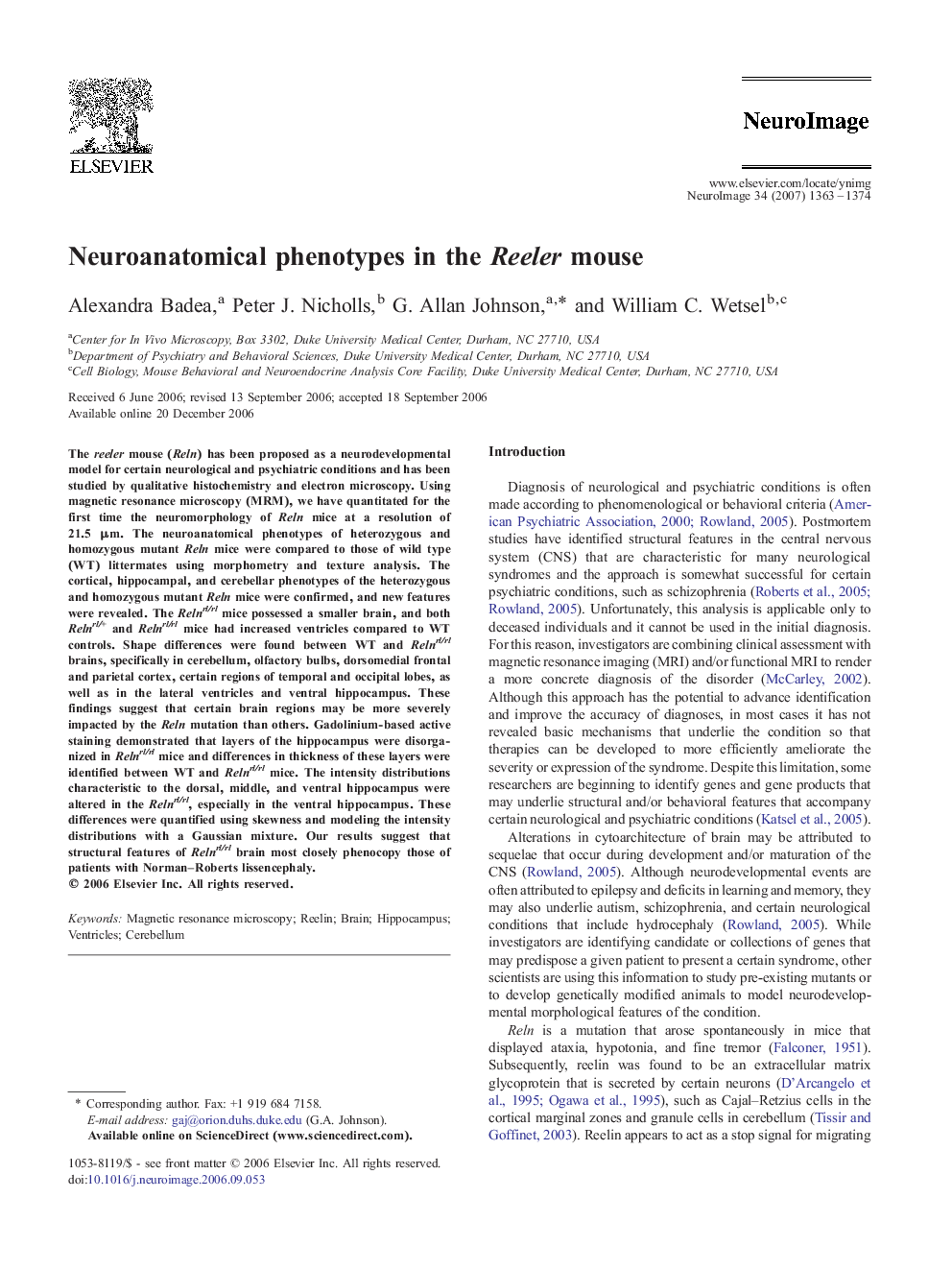| Article ID | Journal | Published Year | Pages | File Type |
|---|---|---|---|---|
| 3073562 | NeuroImage | 2007 | 12 Pages |
The reeler mouse (Reln) has been proposed as a neurodevelopmental model for certain neurological and psychiatric conditions and has been studied by qualitative histochemistry and electron microscopy. Using magnetic resonance microscopy (MRM), we have quantitated for the first time the neuromorphology of Reln mice at a resolution of 21.5 μm. The neuroanatomical phenotypes of heterozygous and homozygous mutant Reln mice were compared to those of wild type (WT) littermates using morphometry and texture analysis. The cortical, hippocampal, and cerebellar phenotypes of the heterozygous and homozygous mutant Reln mice were confirmed, and new features were revealed. The Relnrl/rl mice possessed a smaller brain, and both Relnrl/+ and Relnrl/rl mice had increased ventricles compared to WT controls. Shape differences were found between WT and Relnrl/rl brains, specifically in cerebellum, olfactory bulbs, dorsomedial frontal and parietal cortex, certain regions of temporal and occipital lobes, as well as in the lateral ventricles and ventral hippocampus. These findings suggest that certain brain regions may be more severely impacted by the Reln mutation than others. Gadolinium-based active staining demonstrated that layers of the hippocampus were disorganized in Relnrl/rl mice and differences in thickness of these layers were identified between WT and Relnrl/rl mice. The intensity distributions characteristic to the dorsal, middle, and ventral hippocampus were altered in the Relnrl/rl, especially in the ventral hippocampus. These differences were quantified using skewness and modeling the intensity distributions with a Gaussian mixture. Our results suggest that structural features of Relnrl/rl brain most closely phenocopy those of patients with Norman–Roberts lissencephaly.
